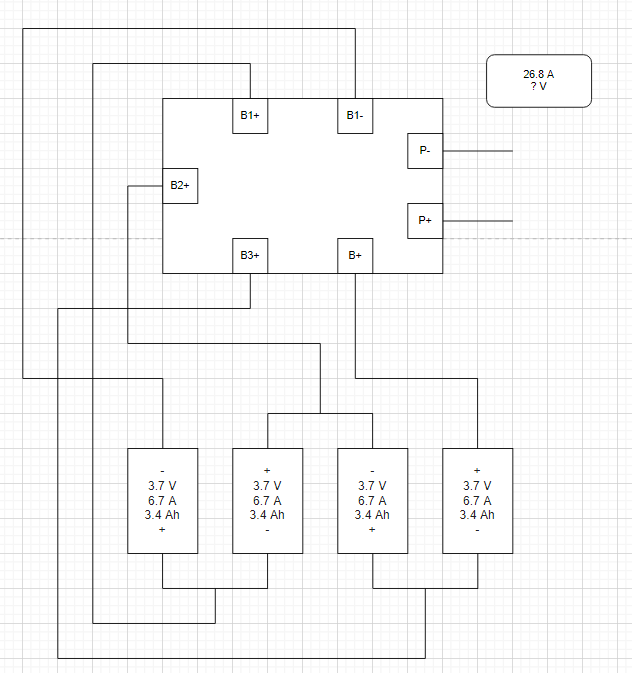I want to build a battery for my robot, and I don't understand how to choose components to use after BMS to charge/discharge the battery.
I have 4 pieces of 18650 batteries: 3.7 V, 6.7 A maximum.
This is my scheme:

I think I will buy BMS like this.
In short, the main characteristics of this BMS:
- 4S, 40 A.
- Charging voltage: 16.8V - 18.1V
- Continuous charge current (upper limit): 20A
- Continuous discharge current (upper limit): 40A
I don't understand what voltage will be in the output of BMS. I guess the maximum current will be 4*6.7 A. I need this information to properly choose step-up or step-down DC-DC converter for charging and discharging. This is the main question. After that, I wrote some additional information that shows my goals globally.
First, discharge:
I need to source:
- Jetson Nano (USB-C, 5V)
- Motor (link) which inputs 7-35V.
I'm going to split a wire and then use step-up or step-down DC-DC converter to make appropriate voltage for each part.
Second, charge. From the description of BMS, I think I will use 5V 3A power adapter, then step-up DC-DC converter to make it about 17 V.
I'm going to use USB-C port to both charge and discharge the battery for Jetson Nano. I'm going to use XT60 to discharge it for the motor.
Do I do it right?
Anticipating the question, the normal power bank doesn't work for my case: it doesn't provide enough current for the motor. I think so because the car shuts down sometimes and these shutdowns correlate with the speed I choose. Also, a normal power (Xiaomi Mi Power Bank 3 Ultra compact) bank turns off automatically because the current is not enough for it, even if I use the low-current charging.
Thank you for making it this far.
UPD: Currently, I'm using 2 power banks. First powers Jetson Nano, second powers the motor. Power banks are normal, intended for smartphones and whatnot. If I use one power bank for both, it doesn't work for some reason.
UPD: Also, I just realized that the motor inputs maximum 2A so I'm confused because I don't understand why it shuts down.
